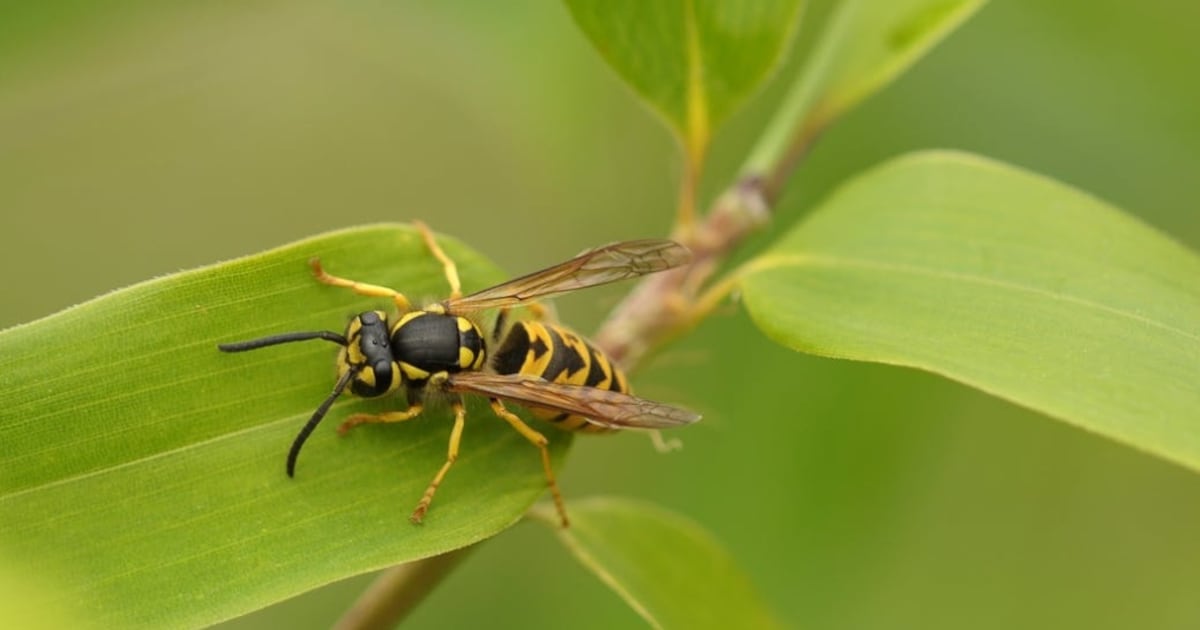Top Stories
Understanding Wasps: Their Summer Surge and How to Cope

As warm weather settles in, wasps have become a noticeable presence at outdoor gatherings and public markets across Canada. These insects, particularly yellowjackets and hornets, are actively seeking food at barbecues, picnics, and food stands. Their numbers can seem overwhelming, but experts suggest that their activity level is typical for this time of year.
Darryl Gwynne, an emeritus professor of biology at the University of Toronto, indicates that more comprehensive data would be necessary to determine if wasp populations have changed significantly over the years. “I suspect it’s simply the time of year for their activity, and they’re out there doing their thing,” he stated in an interview with CTV News. Wasps generally peak in number around July, when their nests are fully developed and they are actively foraging for food.
During this period, the worker wasps—those that do not reproduce—are most visible. They are particularly attracted to sugary foods and beverages, which helps fuel their energy. Gwynne advises that it is essential to keep sugary drinks covered to prevent wasps from getting inside.
Wasp Lifecycle and Seasonal Behavior
The lifecycle of wasps plays a significant role in their visibility. During the summer months, wasp queens remain in their nests, while their workers venture out. In early spring, the visible wasps are typically queens, as the worker population has not yet hatched. Understanding this can help individuals recognize when to expect wasps.
Wasps are ectothermic, meaning their body temperature relies on external conditions. Gwynne describes them as an annual species, with most of the population dying off after the first frost each year. The queens, however, survive the winter by mating and hibernating in leaf litter or log piles. “They store the sperm in special sperm-storing pouches and burrow down until spring when they start their nests,” he explained. If the weather remains warm into the fall, wasps may continue to be noticeable for longer periods.
Research conducted by Gwynne in New Zealand indicates that yellowjackets will expand their nests as long as the weather allows. He noted, “We really are lucky that we get severe frosts here in October or November, which helps reduce their numbers.” Without early frosts, the wasp population could potentially grow unchecked.
Identifying and Managing Wasp Nests
Recognizing wasp nests can be crucial for managing their presence. Nests vary in shape and location. For example, a paper wasp’s nest resembles an upside-down umbrella, supported by a single stalk, while bald-faced hornets create large, paper-like nests that can resemble footballs. Yellowjacket nests typically have a single opening and can be found either above ground or underground in various locations, such as trees and woodpiles.
If wasps become a nuisance on a property, experts recommend seeking professional assistance to handle the situation safely. To reduce the attraction of wasps, it is advisable to remove leftover food and vegetation from gardens and avoid leaving out meats or sugary drinks, as these smells particularly attract them.
Dr. Andrew Young, an assistant professor at the University of Guelph’s School of Environmental Sciences, emphasizes caution around nests. “If there’s a wasp nest in a tree, it’s only going to be there for one year. They don’t survive multiple years, so I give them their space,” he advised last year.
As summer continues, understanding wasps and their behavior can help individuals enjoy outdoor activities without the added stress of these persistent insects. By taking preventive measures and being aware of their lifecycle, communities can coexist with these critters more effectively.
-

 Education2 months ago
Education2 months agoBrandon University’s Failed $5 Million Project Sparks Oversight Review
-

 Lifestyle3 months ago
Lifestyle3 months agoWinnipeg Celebrates Culinary Creativity During Le Burger Week 2025
-

 Science3 months ago
Science3 months agoMicrosoft Confirms U.S. Law Overrules Canadian Data Sovereignty
-

 Health3 months ago
Health3 months agoMontreal’s Groupe Marcelle Leads Canadian Cosmetic Industry Growth
-

 Science3 months ago
Science3 months agoTech Innovator Amandipp Singh Transforms Hiring for Disabled
-

 Technology3 months ago
Technology3 months agoDragon Ball: Sparking! Zero Launching on Switch and Switch 2 This November
-

 Education3 months ago
Education3 months agoRed River College Launches New Programs to Address Industry Needs
-

 Technology3 months ago
Technology3 months agoGoogle Pixel 10 Pro Fold Specs Unveiled Ahead of Launch
-

 Technology1 month ago
Technology1 month agoDiscord Faces Serious Security Breach Affecting Millions
-

 Business2 months ago
Business2 months agoRocket Lab Reports Strong Q2 2025 Revenue Growth and Future Plans
-

 Science3 months ago
Science3 months agoChina’s Wukong Spacesuit Sets New Standard for AI in Space
-

 Education3 months ago
Education3 months agoAlberta Teachers’ Strike: Potential Impacts on Students and Families
-

 Technology3 months ago
Technology3 months agoWorld of Warcraft Players Buzz Over 19-Quest Bee Challenge
-

 Business3 months ago
Business3 months agoNew Estimates Reveal ChatGPT-5 Energy Use Could Soar
-

 Business3 months ago
Business3 months agoDawson City Residents Rally Around Buy Canadian Movement
-

 Education3 months ago
Education3 months agoNew SĆIȺNEW̱ SṮEȽIṮḴEȽ Elementary Opens in Langford for 2025/2026 Year
-

 Technology1 month ago
Technology1 month agoHuawei MatePad 12X Redefines Tablet Experience for Professionals
-

 Technology3 months ago
Technology3 months agoFuture Entertainment Launches DDoD with Gameplay Trailer Showcase
-

 Business3 months ago
Business3 months agoBNA Brewing to Open New Bowling Alley in Downtown Penticton
-

 Technology3 months ago
Technology3 months agoGlobal Launch of Ragnarok M: Classic Set for September 3, 2025
-

 Technology3 months ago
Technology3 months agoInnovative 140W GaN Travel Adapter Combines Power and Convenience
-

 Science3 months ago
Science3 months agoXi Labs Innovates with New AI Operating System Set for 2025 Launch
-

 Technology3 months ago
Technology3 months agoNew IDR01 Smart Ring Offers Advanced Sports Tracking for $169
-

 Technology3 months ago
Technology3 months agoDiscover the Relaxing Charm of Tiny Bookshop: A Cozy Gaming Escape










